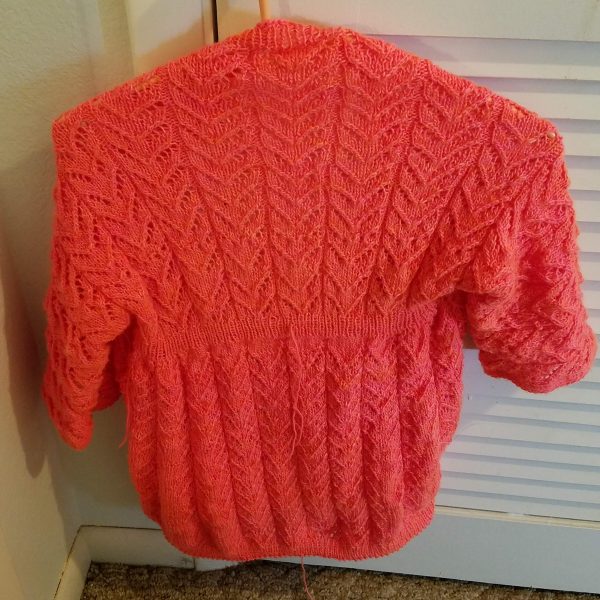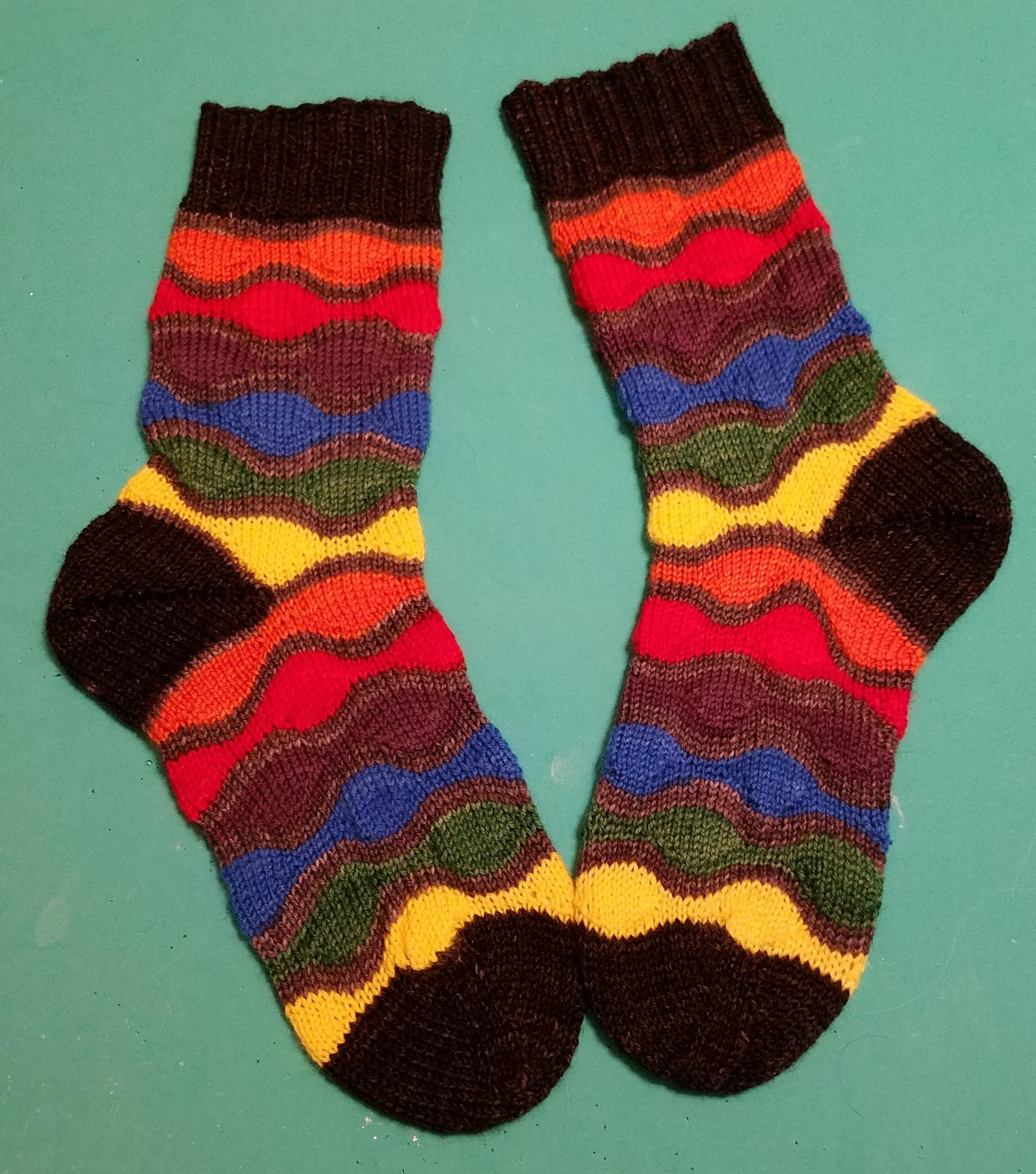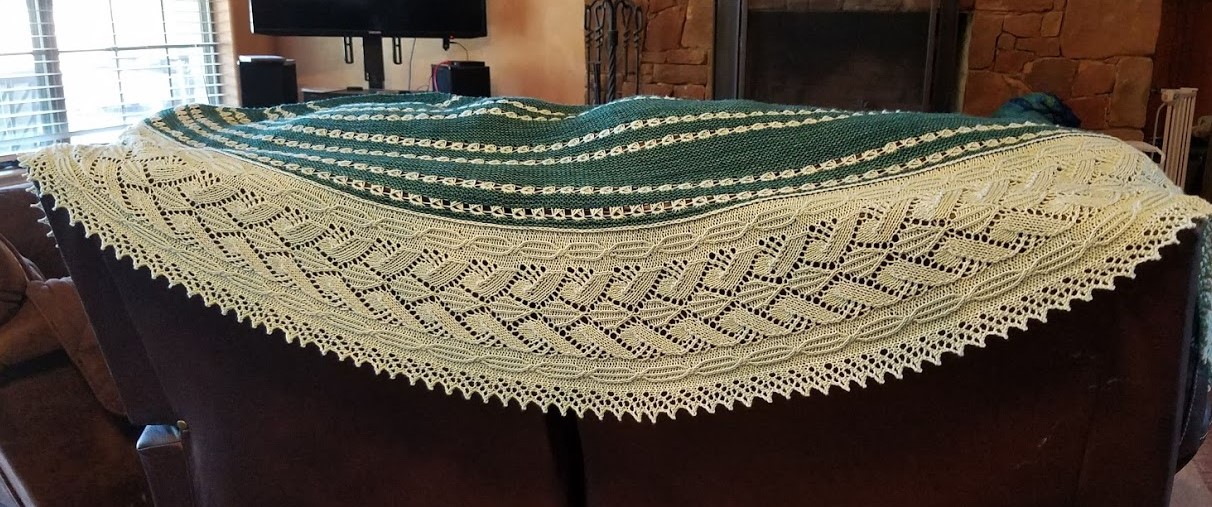Almost every time I talk about blocking knitted items, someone asks about blocking. I showed some of it in this post about Nicole’s Hitofude.
Soaking in room temp water with a wool wash or soaking formula causes the fibers to relax and will remove any dirt that has been picked up by the yarn through the manufacturing, shipping, retail storage, etc.
Blocking should not involve stretching but simply shaping to the intended shape/size of the project. Blocking opens up lace designs and creates definition for the design.
A popular question is “Will the garment have to be blocked every time it’s washed?” The answer is “probably”. Superwash yarns can be machine washed and while some can be machine dried, most recommend laying flat to dry. For basic cardigans, most hats, socks . . I just pat them into shape and let them dry. For something like a lacy shawl or any lacy project for that matter . . like Hitofude, it will probably need to be blocked with wires after washing. Remember that many of our knitted items aren’t washed often.
After blocking a project, I always feel like I make a bigger deal of it than it really is . . kinda like driving through Oklahoma City. Rarely is it horrible . . most of the time I work myself up dreading it (driving through OKC and blocking a project) and once it’s done, I wonder why I complained so much so, don’t let my aversion to blocking deter you from knitting a project that will require blocking.
Yesterday I showed before and after blocking of Nicole’s Hitofude. Here they are again.


Another good example of the difference in before/after blocking is my Undulance Socks.


Here’s my Sunset Highway pullover.


Here’s Campside Cardi before and after:


Last, here’s Jurata before and after blocking.


Since most of us are (or have been) quilters, a good analogy to soaking and blocking is the difference in a quilt when blocks are pressed and squared up before assembling into the quilt. When I was longarm quilting a lot for others, it was often fairly obvious when someone had not pressed their seams, given the whole block a good pressing and squaring before assembling into the quilt top.
Blocking adds that “finishing touch” and after considering how much time and effort have gone into the project, the blocking takes little time at all and is a step that needs to be done.

Teri says
Sure makes a difference! Love all of your work!
dezertsuz says
It does make a difference. Maybe there’s a reason I don’t knit. =)